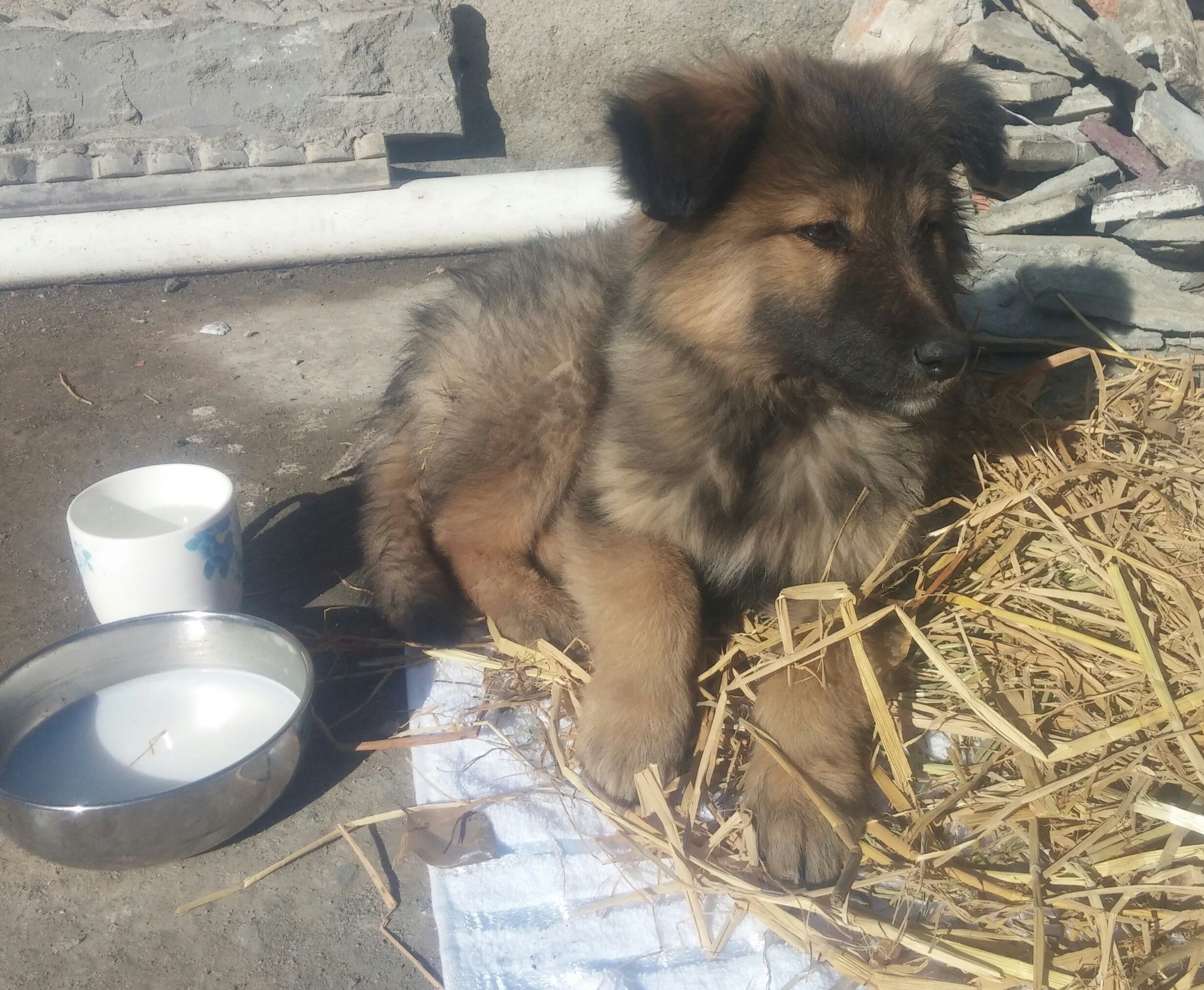Sign and symptoms
Dogs that develop the disease show signs of the illness within 3 to 7 days. The signs may include lethargy, vomiting, fever, and diarrhea (usually bloody). Generally, the first sign of CPV is lethargy. Secondary signs are loss of weight and appetite or diarrhea followed by vomiting. Diarrhea and vomiting result in dehydration that upsets the electrolyte balance and this may affect the dog critically. Secondary infections occur as a result of the weakened immune system. Because the normal intestinal lining is also compromised, blood and protein leak into the intestines leading to anemia and loss of protein, and endotoxins escaping into the bloodstream, causing endotoxemia. Dogs have a distinctive odor in the later stages of the infection. The white blood cell level falls, further weakening the dog. Any or all of these factors can lead to shock and death.[2]
Diagnosis Edit
Diagnosis is made through detection of CPV2 in the feces by either an ELISA or a hemagglutination test, or by electron microscopy. PCR has become available to diagnose CPV2, and can be used later in the disease when potentially less virus is being shed in the feces that may not be detectable by ELISA.[3] Clinically, the intestinal form of the infection can sometimes be confused with coronavirus or other forms of enteritis. Parvovirus, however, is more serious and the presence of bloody diarrhea, a low white blood cell count, and necrosis of the intestinal lining also point more towards parvovirus, especially in an unvaccinated dog. The cardiac form is typically easier to diagnose because the symptoms are distinct.[4]
Treatment Edit
Survival rate depends on how quickly CPV is diagnosed, the age of the dog and how aggressive the treatment is. Treatment usually involves extensive hospitalization, due to the severe dehydration and damage to the intestines and bone marrow. A CPV test should be given as early as possible if CPV is suspected in order to begin early treatment and increase survival rate if the disease is found.
Treatment ideally also consists of crystalloid IV fluids and/or colloids (e.g., Hetastarch), antinausea injections (antiemetics) such as maropitant, metoclopramide, dolasetron, ondansetron and prochlorperazine, and broad-spectrum antibiotic injections such as cefazolin/enrofloxacin, ampicillin/enrofloxacin, metronidazole, timentin, or enrofloxacin.[5] IV fluids are administered and antinausea and antibiotic injections are given subcutaneously, intramuscularly, or intravenously. The fluids are typically a mix of a sterile, balanced electrolyte solution, with an appropriate amount of B-complex vitamins, dextrose and potassium chloride. Analgesic medications can be used to counteract the intestinal discomfort caused by frequent bouts of diarrhea; however, the use of opioid analgesics can result in secondary ileus and decreased motility.
In addition to fluids given to achieve adequate rehydration, each time the puppy vomits or has diarrhea in a significant quantity, an equal amount of fluid is administered intravenously. The fluid requirements of a patient are determined by the animal's body weight, weight changes over time, degree of dehydration at presentation and surface area.
A blood plasma transfusion from a donor dog that has already survived CPV is sometimes used to provide passive immunity to the sick dog. Some veterinarians keep these dogs on site, or have frozen serum available. There have been no controlled studies regarding this treatment.[5] Additionally, fresh frozen plasma and human albumin transfusions can help replace the extreme protein losses seen in severe cases and help assure adequate tissue healing. However, this is controversial with the availability of safer colloids such as Hetastarch, as it will also increase the colloid osmotic pressure without the ill effect of predisposing that canine patient to future transfusion reaction.
Once the dog can keep fluids down, the IV fluids are gradually discontinued, and very bland food slowly introduced. Oral antibiotics are administered for a number of days depending on the white blood cell count and the patient's ability to fight off secondary infection. A puppy with minimal symptoms can recover in 2 or 3 days if the IV fluids are begun as soon as symptoms are noticed and the CPV test confirms the diagnosis. If more severe, depending on treatment, puppies can remain ill from 5 days up to 2 weeks. However, even with hospitalization, there is no guarantee that the dog will be cured and survive.

Hi! I am a robot. I just upvoted you! I found similar content that readers might be interested in:
https://en.wikipedia.org/wiki/Canine_parvovirus
Downvoting a post can decrease pending rewards and make it less visible. Common reasons:
Submit
Yup you are right actually the case was treated by me and I got help from wiki regarding the case n its detail so one can study it further too on wiki and petseducation.com 👍
Downvoting a post can decrease pending rewards and make it less visible. Common reasons:
Submit
Your post has been great
Downvoting a post can decrease pending rewards and make it less visible. Common reasons:
Submit
Thanks this case was treated by me and fortunately the pup survive and is now quite well 👍
Downvoting a post can decrease pending rewards and make it less visible. Common reasons:
Submit